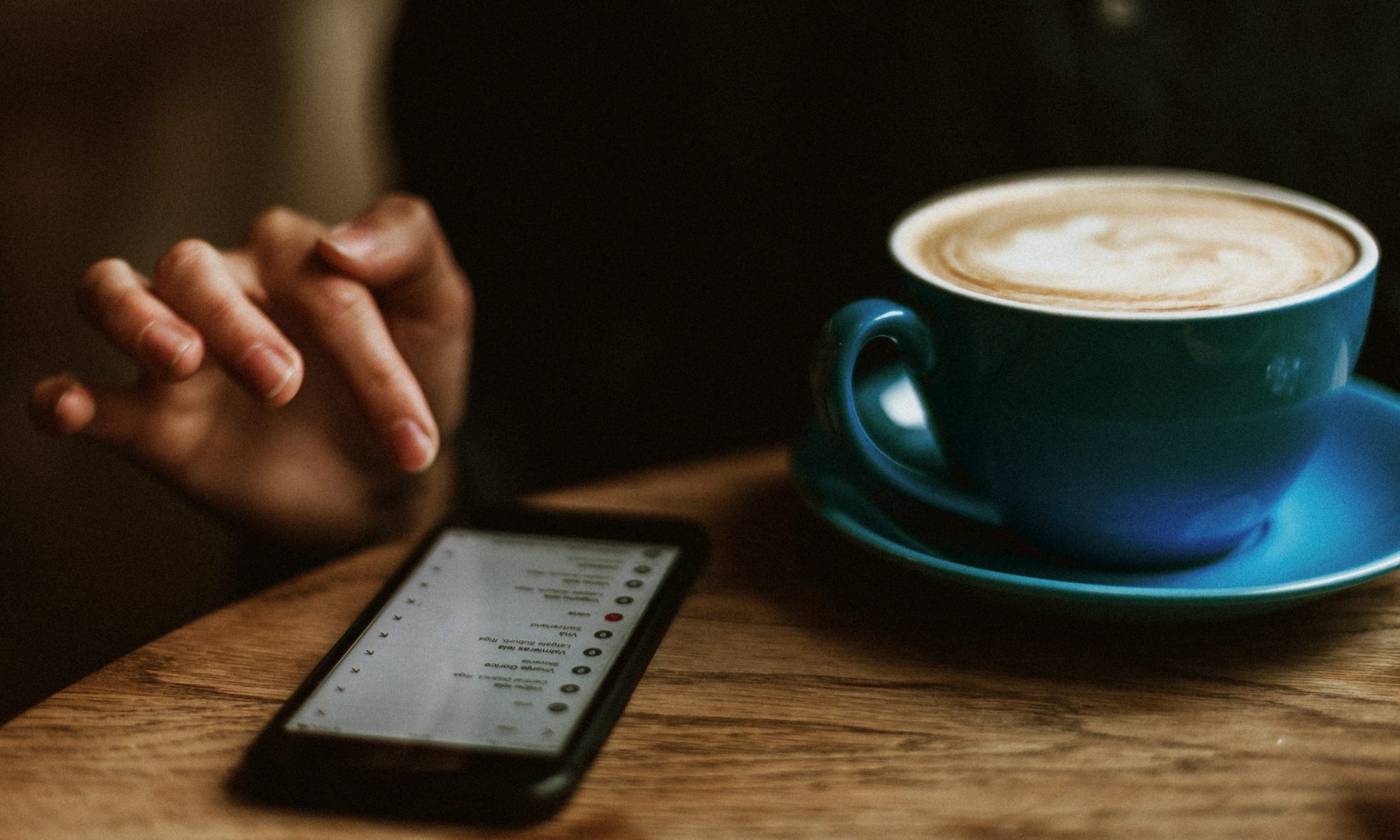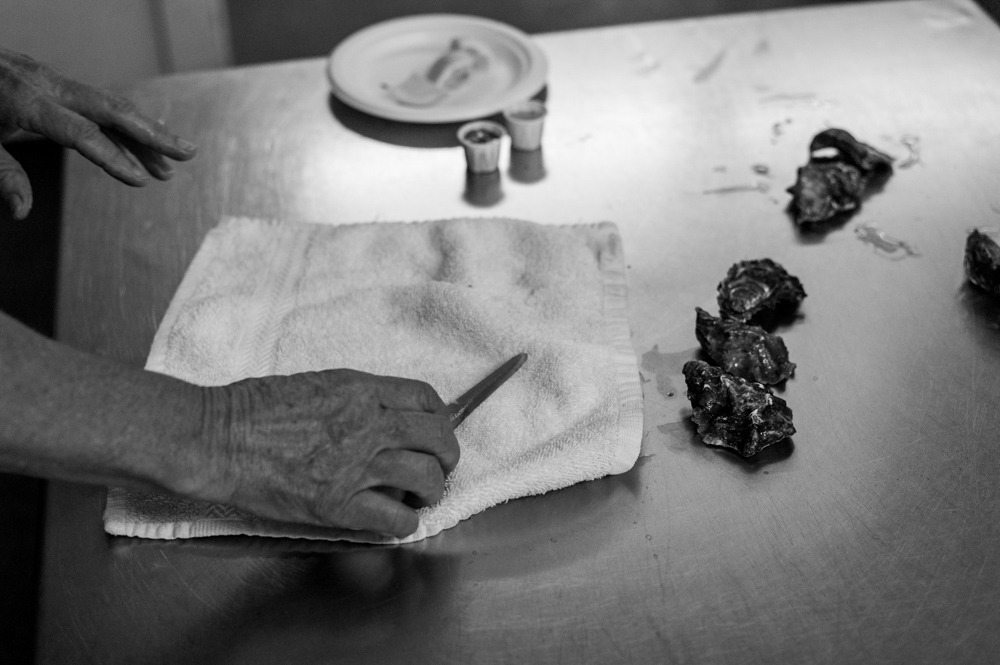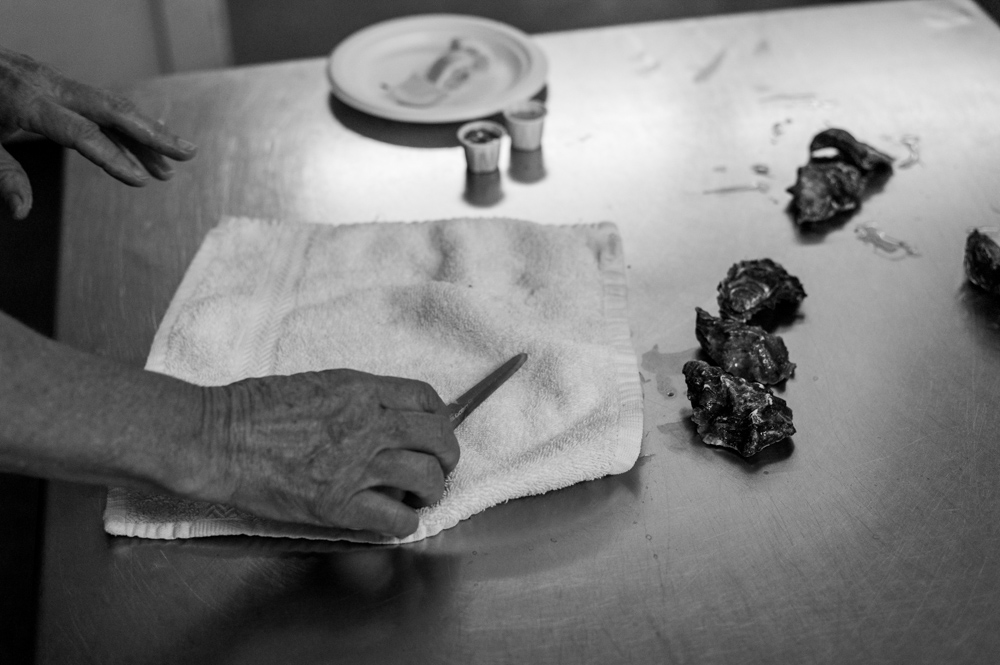
Last summer I attended a photography workshop in Berlin, expecting to spend time taking in the city’s fascinating street scene—photographing people and architecture and trying to artfully capture the grittiness that is unique to Berlin, one of Europe’s most diverse cities. But on the first day of the workshop I learned we would be photographing two artisans’ studios—a luthier, which is a maker of string instruments, and a pipe maker. Although initially disappointed I wouldn’t get to photograph Berlin’s urban scene, the two days I spent in their studios turned out to be far more satisfying than I had hoped for.
As an amateur violinist, I knew how a violin was made, but I’d never actually witnessed the process firsthand. And during the next day’s shoot observing the pipe maker, who turned out to be a former Major in the East German Army, I learned about the hundreds of different styles and designs his customers could choose from when ordering a pipe, with prices of up to several thousand dollars for his most elaborate designs.
When I returned to Santa Barbara, I began exploring the possibility of putting an exhibit together documenting artisans and craftsmen in their workspaces.
I liked thinking about these people as Makers—individuals who made something that required skill and creativity and gave people pleasure in the finished product. Not long after the new year, I approached a gallery in Los Angeles with the idea of an exhibition and they quickly agreed to host the show in early June.
I had two collections ready from my Berlin trip, but I knew it wouldn’t be enough for a solo show; I needed another two or three makers to round out the exhibit. My oldest friend has been a painter all his life, and has a studio in downtown Los Angeles. When I approached him about including him in the show, he agreed to let me spend a day shooting him while he was working on a new composition. I have another friend with a woodworking shop in Santa Barbara, my hometown, where he’s been making furniture for nearly thirty years. So both of those shoots easily met my definition of Maker.
This provided four series for the show, but I wanted five.
As I was organizing my work for the show I came across images from another photography workshop I attended in 2012, where I documented workers at the Drakes Bay Oyster Company in Pt. Reyes, California. Could oyster farmers be considered Makers? They probably weren’t artisans like my other subjects, but I was intrigued by the possibility.
When I photographed the workers at Drakes Bay, they had taken the time to explain what it actually meant to farm oysters. I love oysters, but I’d never really given any thought as to what was involved in bringing them to the table.
As I reviewed the images I’d taken four years earlier, I realized that the process of growing an oyster from microscopic larvae to its edible state was the literal making of an oyster. Here was my fifth series for the show. It might have been a bit of a stretch, but it met the requirements of skill and creativity—by needing to deal with weather and harvesting variations—as well as by providing pleasure to people.
There were some days when I had second thoughts: Wouldn’t it be better to photograph a chef in her kitchen, making a wonderful meal, giving pleasure to a table of friends or customers? Isn’t a kitchen a better studio of sorts than an oyster farm? But every time, I returned to the idea of including the oyster farmers in my exhibit.
I went back to my pictures, and came across the image below of the oyster seeds or larvae that are the starting point of making an oyster.
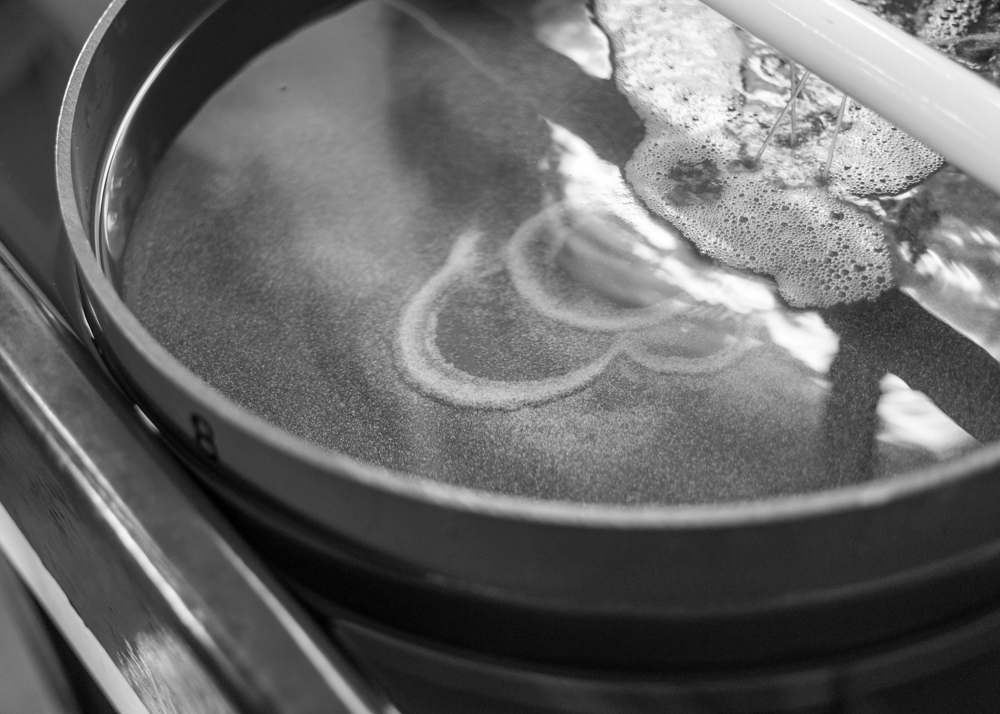
Oyster Larvae in a salt water bath
Drakes Bay would get a few million seeds from a hatchery in Oregon and disperse them in buckets of cold water like the one above, gradually adding warmer water to reanimate the seeds. The seeds would then be placed into a larger tank containing nets filled with recycled oyster shells. After a few days, the seeds would attach themselves to the shells before being relocated to the ocean while still in the nets, thus beginning their long growing process.
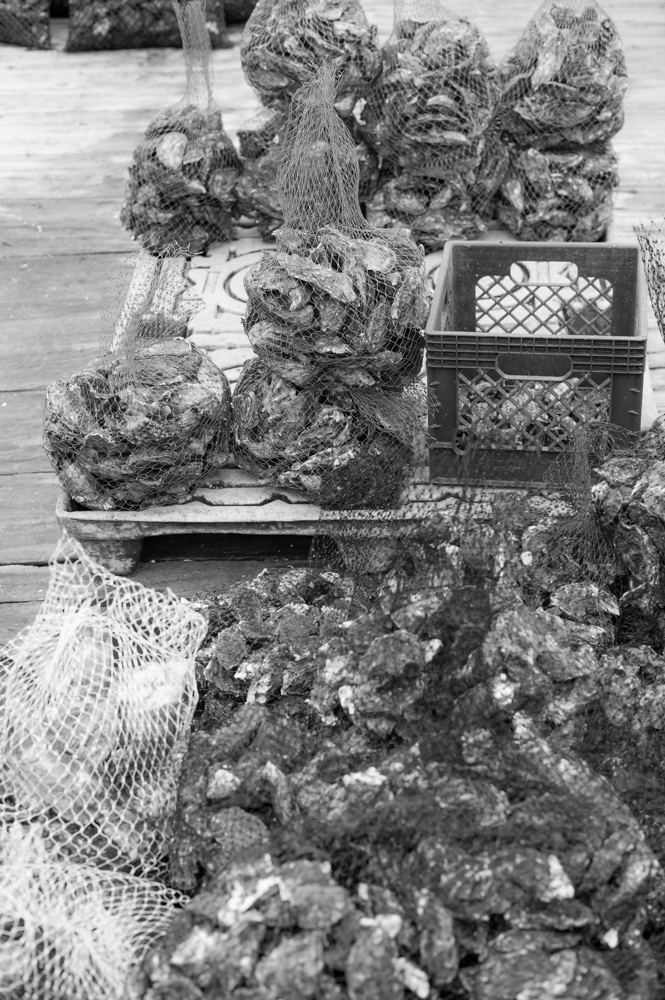
Young oysters attached to recycled shells in net bags
After two to three months the baby oysters in their shells are attached to “trees” of metal rods that are suspended in the Drakes Bay Estero where they would grow for two years or more until they are ready for harvest. Workers retrieve the oysters, strip them from their metal rods, and harvest them for us to enjoy.
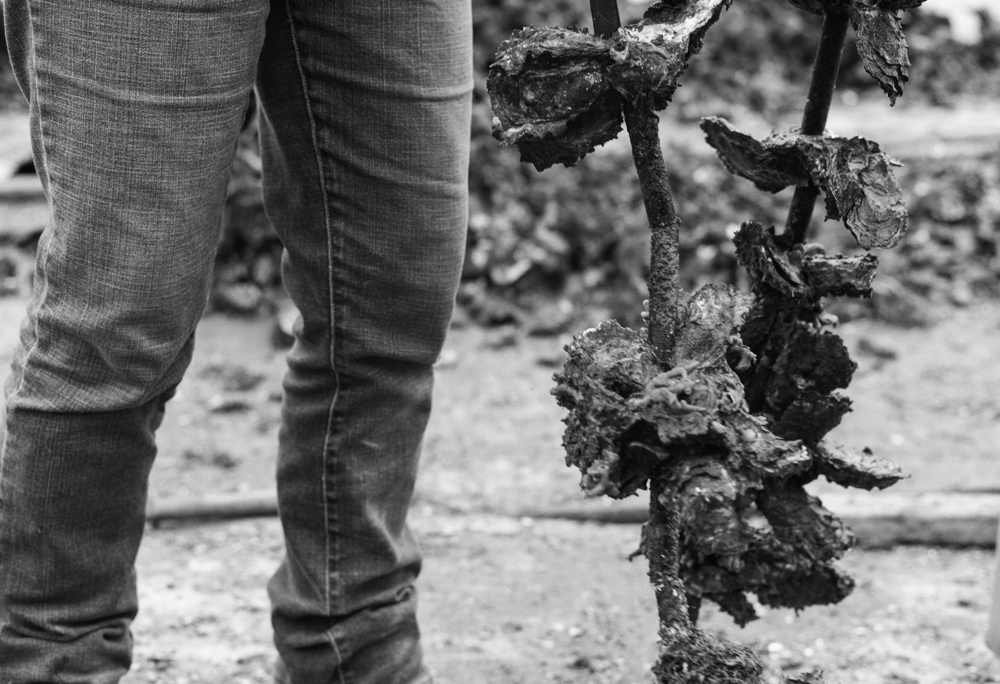
Oysters are attached to metal rods and suspended in the ocean for the long growing period.
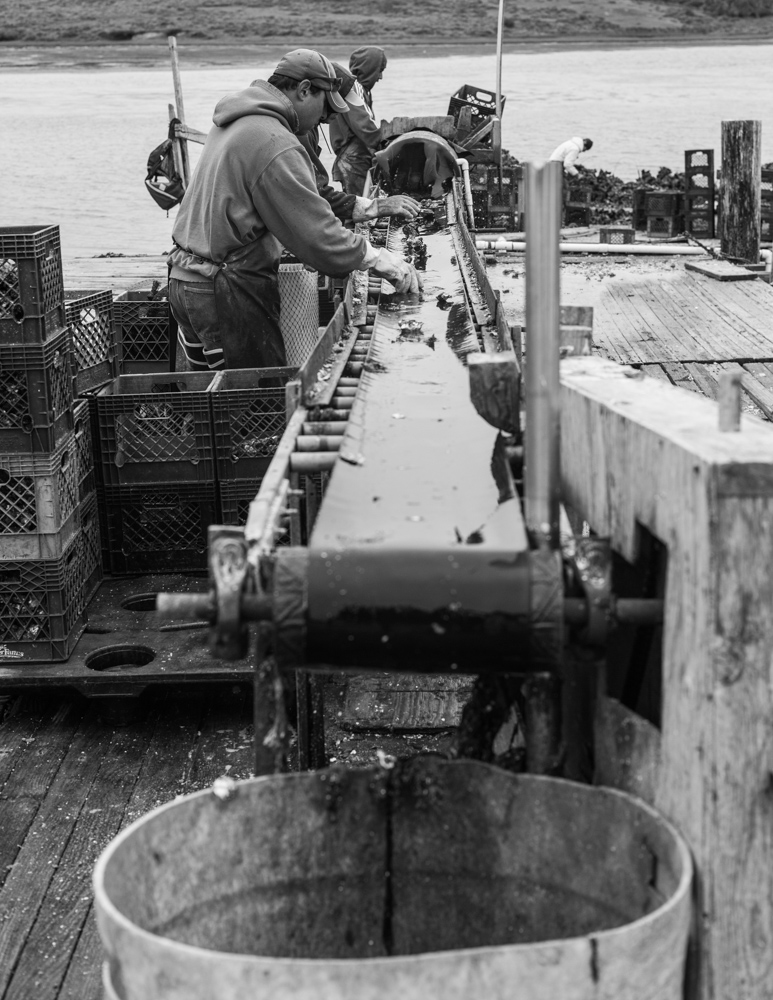
Workers harvesting oysters
Drakes Bay has been in commercial oyster production for nearly one hundred years. Sadly, the National Park Service (NPS), after a lengthy and controversial legal battle, shut down the company in 2015. The workers shown in these images have all lost their livelihood; the historic buildings and equipment at the site have been removed and the NPS is in the process of dismantling and removing the oyster racks and related materials. I was fortunate to have documented the process of making oysters in the last surviving oyster operation on the California coast. Like so many things, it is an art—requiring skill, ingenuity, dedication and care.
About the Photographer: Lawrence Davanzo
 Lawrence Davanzo is a Santa Barbara-based photographer.
Lawrence Davanzo is a Santa Barbara-based photographer.
You can see more of his work at www.lawrencedavanzo.com.
